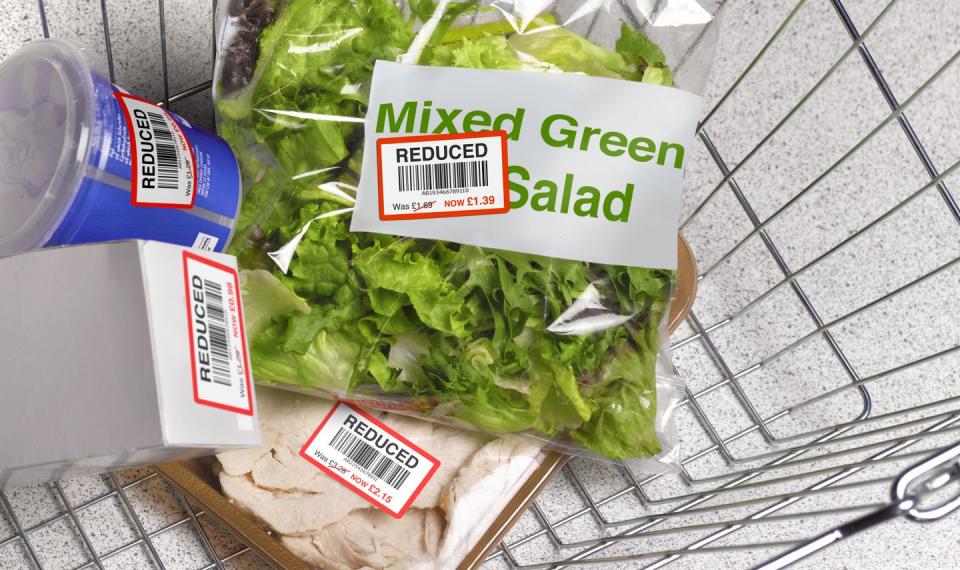Experts reveal 6 ways to cut your grocery bill, as prices continue to rise

We’ve all been feeling the pinch of high prices of, well, pretty much everything this year. And, unfortunately, the cost of food is no exception.
The latest figures from the Office for National Statistics report a 10.1% increase in the price of food and non-alcoholic beverages in the year to October 2023. And while this figure is down from 12.2% in September and a recent high of 19.2% in March 2023 – which was the highest annual rate seen for over 45 years – it’s fair to say we’re all feeling the pinch when we head to the supermarket.
These ever-increasing prices at the till are stressful, but even more so when it adds to the already existing pressure from sky-high energy bills amid the cost of living crisis.
But, thankfully, there are ways to cut your grocery bill without having to sacrifice your favourite foods.
6 ways to cut your grocery bill, as prices continue to rise
1. Switch to own-brands
If you haven’t done this already, switching to own brand products should be the first thing on your list if you want to cut costs. Some own-brand products are as good, if not better, than the well-known brands.
For example, Asda’s Special Flakes Cereal costs just £1.40 but the taste testers over on Good Housekeeping actually liked them more than the big-name brand, which costs £2.60 more.
More consumers are starting to take this approach, with the sales of branded products falling by 5.1%, according to NielsenIQ.
2. Plan meals and portions carefully
Buying only what you need may sound like an obvious way to save money, but it can be easier said than done.
Try planning out your meals for the week ahead. Then, before you go to the supermarket, use the Love Food Hate Waste Portion Calculator so you can figure out exactly what you need to buy.
Simply choose an ingredient you plan to serve up – rice, for instance – then select the number of people you’re cooking for, and the tool will tell you how much you need. It even works out portion sizes for toddlers, younger children aged 4-10 years and older children aged 11-18 years, as well as adult portions.
This will also help you avoid cooking too much, which may reduce the amount of food you throw away.
3. Work out if you're really getting a good deal
You can waste precious food budget when you're tempted by false bargains. You're probably already a pro at spotting 'yellow sticker' food that's been reduced because it's near the 'use-by' or 'best-before' date. But you're not necessarily getting a good deal on these items.
'Yellow stickers can offer great discounts, but always look at the original price, too,' says Reduced Grub food blogger, Emma Bradley. 'Check for better reductions later in the day when 20p off can turn into 75% off. Just make sure it's something you actually need.'
If you really have found a bargain on a yellow sticker item, check if you can freeze it to enjoy later. According to Sainsbury's, 60% of us avoid buying reduced products because we don't think we'll be able to eat it in time. Pop your bargains in the freezer and you've got yourself a snack or a meal for later.

4. Look up and down
Research shows that we tend to go for a mid-range choice and retailers know this! They stack their shelves with the most profitable items at eye level.
So, if you're looking for cheaper options, look at the shelves above and below your line of vision as you'll probably find a better deal.
5. Check the temperature of your fridge
Yes really, this is important! The average UK household throws away £70 of otherwise edible food every month simply because it has been stored incorrectly. That’s a whopping £840 a year going straight into the food waste bin that you could shave off your grocery spend.
Check your fridge is set to the recommended temperature of 4°C or lower to ensure your fresh food and leftovers keep for as long as they should.
If your fridge doesn’t have a digital temperature display, the Chill the Fridge Out tool offers advice on setting it to the correct temperature. Then use a fridge thermometer to check it’s cold enough.
6. Make better use of your freezer
Keep an eye on the ‘use by’ dates of meat, fish and dairy products in your fridge. If you think you’re not going to use them before they go off, freeze them.
The same applies to things like packets of bacon or jars of passata you open but don’t use up in one go. Remember to label anything you put in the freezer clearly with the date it went in.
And, wherever possible, freeze things in the quantities required to cook your favourite recipes to avoid having to defrost more than you need.
Cut through the noise and get practical, expert advice, home workouts, easy nutrition and more direct to your inbox. Sign up to the WOMEN'S HEALTH NEWSLETTER
You Might Also Like


